
How to Use SparkFun LiPo Charger Plus: Examples, Pinouts, and Specs
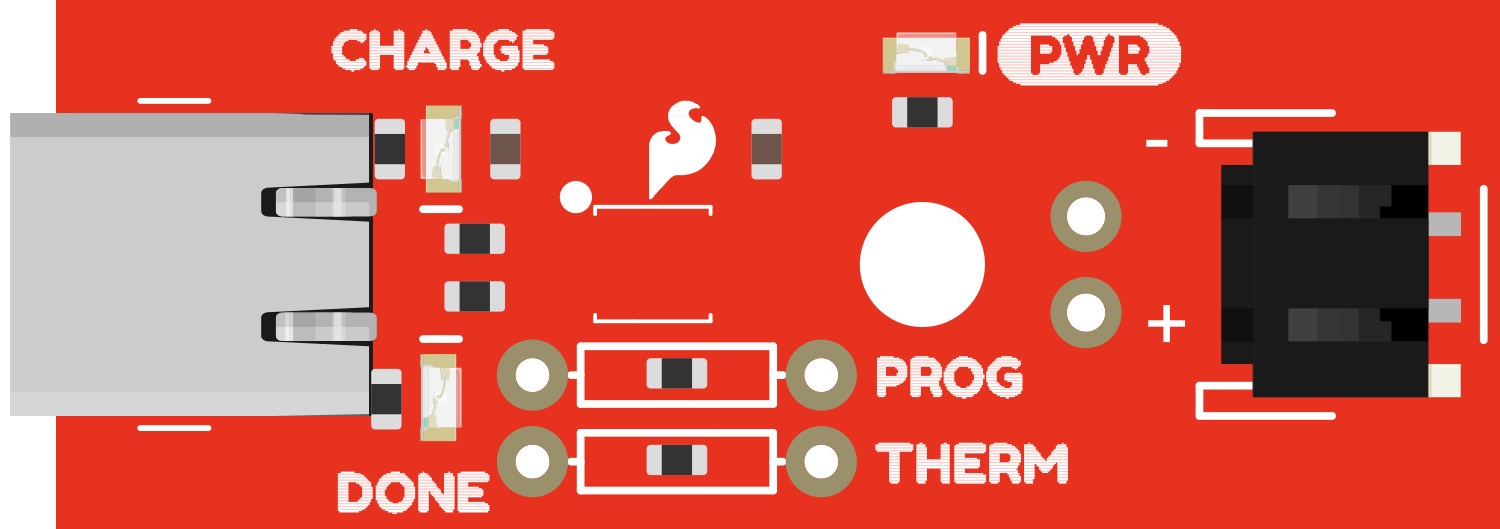
 Design with SparkFun LiPo Charger Plus in Cirkit Designer
Design with SparkFun LiPo Charger Plus in Cirkit DesignerIntroduction
The SparkFun LiPo Charger Plus is a compact charging solution designed for lithium polymer (LiPo) batteries, which are commonly used in portable electronics, drones, and DIY projects. This board simplifies the process of charging LiPo batteries by providing a micro USB port for power input and a JST connector for the battery. It also includes status LEDs that provide visual feedback on the charging state. The charger is designed to be user-friendly and is suitable for hobbyists and professionals alike.
Explore Projects Built with SparkFun LiPo Charger Plus
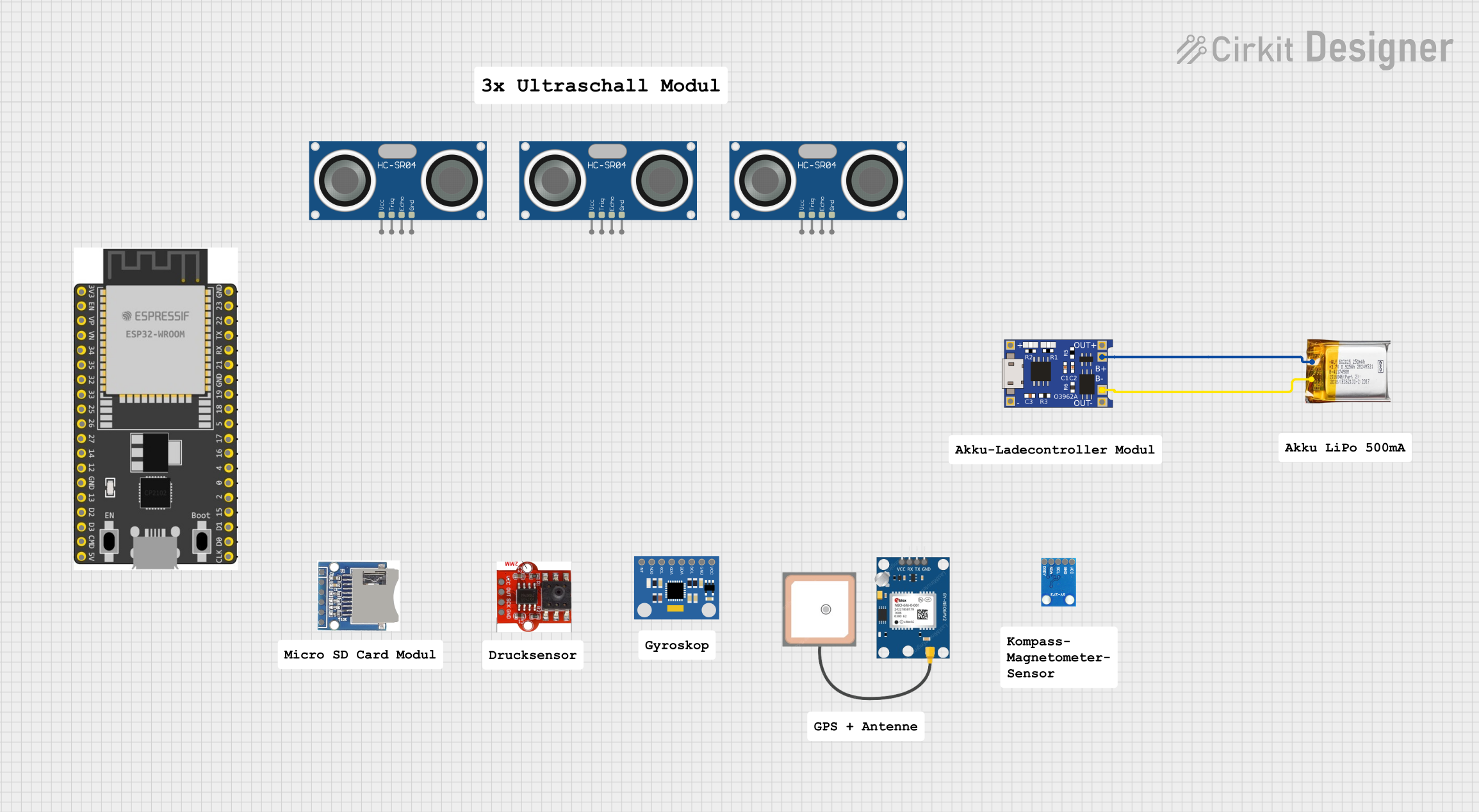
 Open Project in Cirkit Designer
Open Project in Cirkit Designer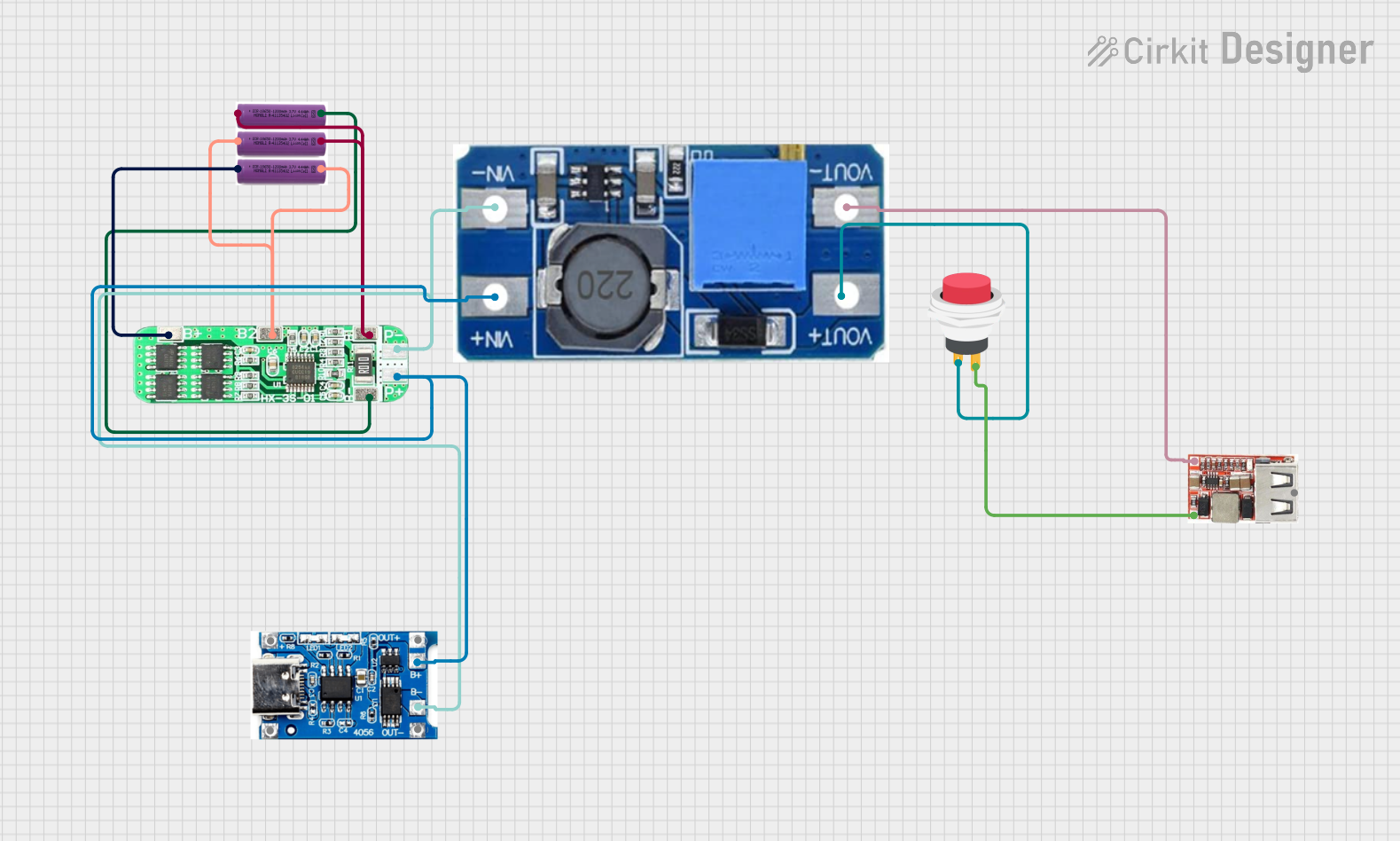
 Open Project in Cirkit Designer
Open Project in Cirkit Designer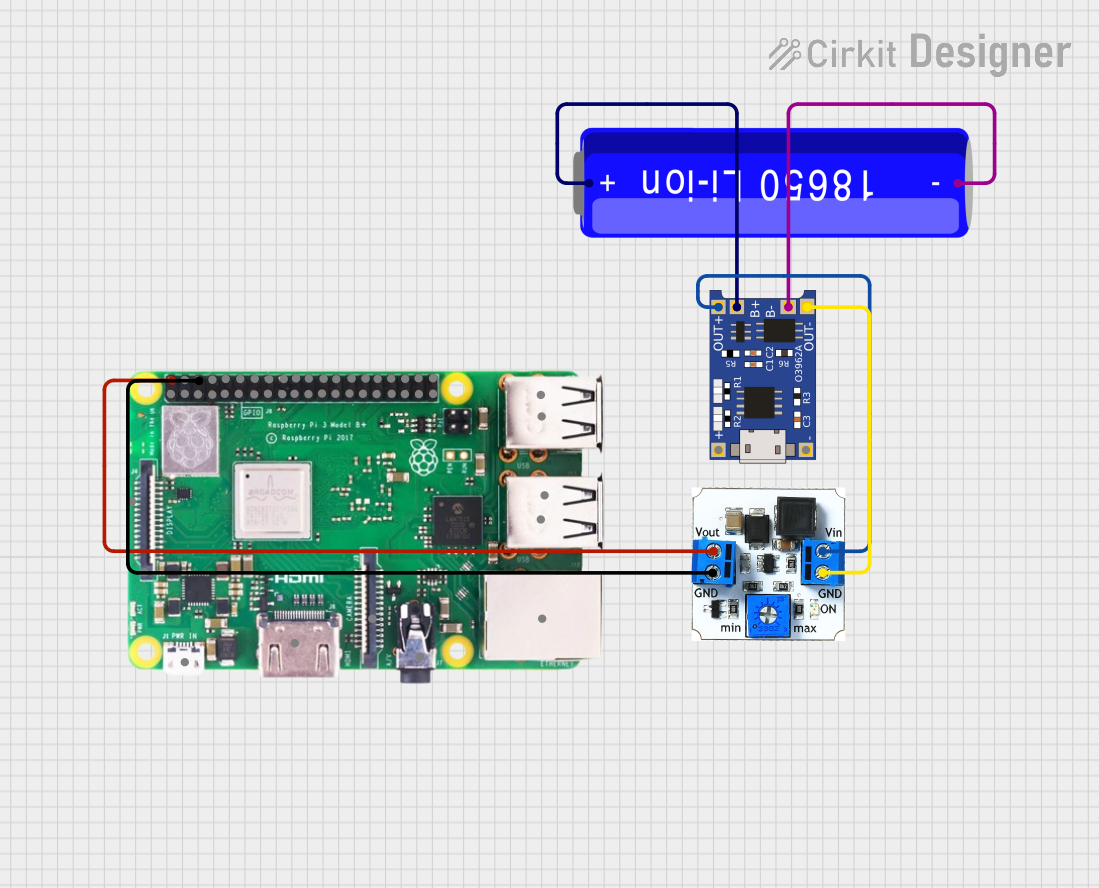
 Open Project in Cirkit Designer
Open Project in Cirkit Designer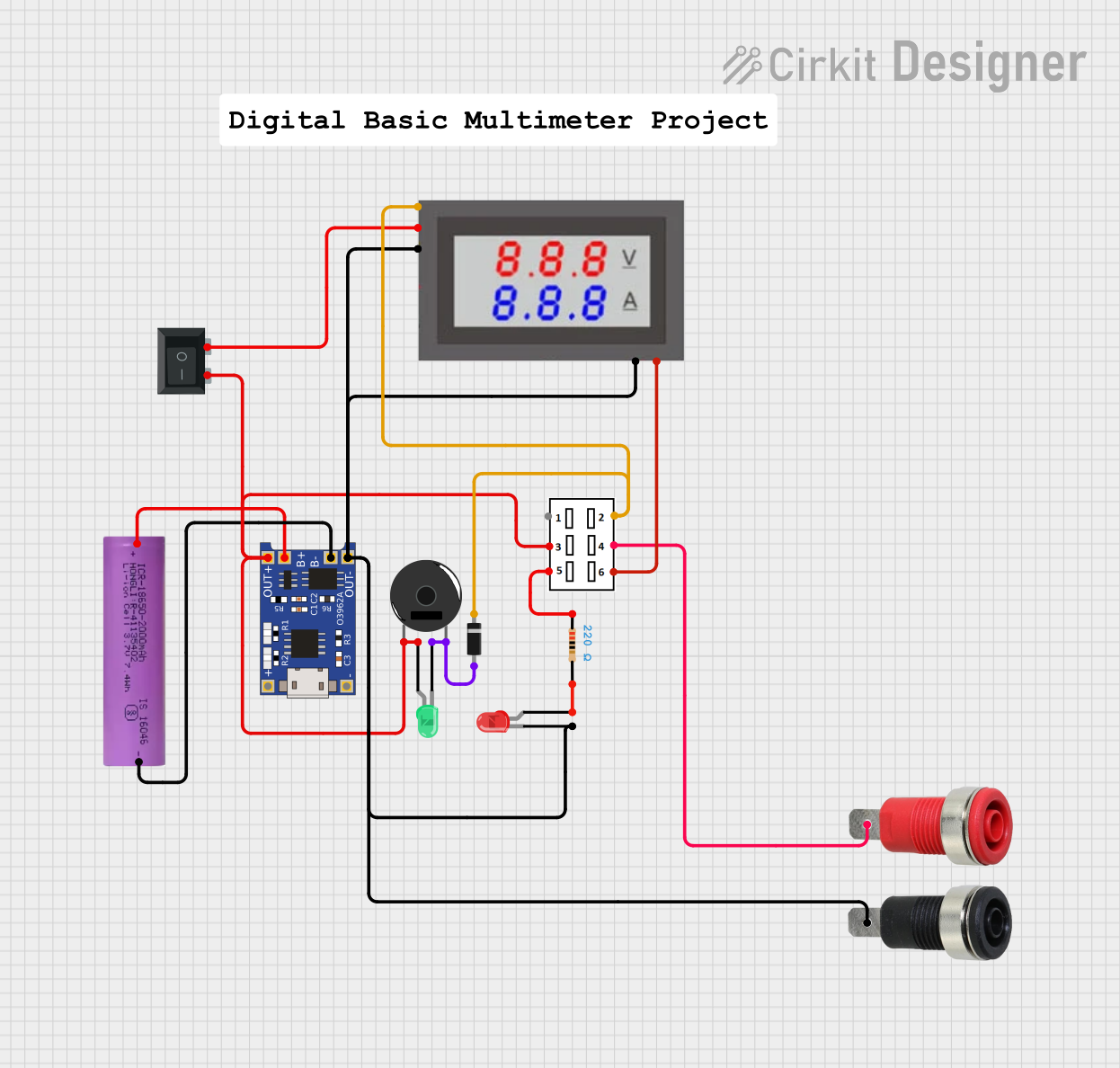
 Open Project in Cirkit Designer
Open Project in Cirkit DesignerExplore Projects Built with SparkFun LiPo Charger Plus

 Open Project in Cirkit Designer
Open Project in Cirkit Designer
 Open Project in Cirkit Designer
Open Project in Cirkit Designer
 Open Project in Cirkit Designer
Open Project in Cirkit Designer
 Open Project in Cirkit Designer
Open Project in Cirkit DesignerCommon Applications and Use Cases
- Portable electronic devices
- DIY electronics projects
- Remote control vehicles and drones
- Wearable technology
- Robotics
Technical Specifications
Key Technical Details
- Input Voltage (via micro USB): 5V
- Charge Current: Adjustable, 100mA to 500mA
- Battery Voltage: 3.7V (single cell)
- Charge Cutoff Voltage: 4.2V ± 1%
- Operating Temperature: -10°C to +85°C
Pin Configuration and Descriptions
| Pin | Description |
|---|---|
| BAT | Battery positive connection to LiPo battery |
| GND | Ground connection |
| USB | Micro USB port for power input |
| STAT | Status LED indicator (Charging: Red, Charged: Green) |
Usage Instructions
How to Use the Component in a Circuit
- Connect the LiPo battery to the JST connector on the board, ensuring correct polarity.
- Plug a micro USB cable into the USB port and connect it to a power source (e.g., USB wall adapter or computer USB port).
- Observe the status LEDs to monitor the charging process.
Important Considerations and Best Practices
- Always verify the polarity of the battery before connecting it to the charger.
- Do not exceed the recommended input voltage as it may damage the charger.
- Adjust the charge current according to the battery's specifications.
- Ensure the charger is placed on a non-conductive surface to prevent short circuits.
- Do not leave the battery unattended while charging.
- Use the charger in a well-ventilated area to prevent overheating.
Troubleshooting and FAQs
Common Issues
- Battery not charging: Ensure the battery is properly connected and the micro USB cable is plugged into a power source.
- LEDs not indicating status: Check the micro USB cable and power source for proper operation.
Solutions and Tips for Troubleshooting
- If the battery is not charging, double-check the connections and try a different power source or USB cable.
- If the LEDs are not functioning, inspect the board for any signs of damage or loose components.
- In case of overheating, immediately disconnect the charger and allow it to cool before inspecting.
FAQs
Q: Can I charge multiple batteries at once? A: No, the SparkFun LiPo Charger Plus is designed to charge a single LiPo battery at a time.
Q: What should I do if the battery starts to swell during charging? A: Immediately disconnect the battery from the charger and place it in a safe area away from flammable materials. Swelling can indicate a damaged or faulty battery.
Q: Is it possible to power a project while charging the battery? A: Yes, the SparkFun LiPo Charger Plus allows for pass-through charging, enabling you to power your project while the battery is being charged.
Example Code for Arduino UNO
// There is no direct interaction code required for the SparkFun LiPo Charger Plus
// when using it with an Arduino UNO, as the charging process is standalone and
// does not require microcontroller communication.
// However, if you wish to monitor the charging status via the Arduino, you can
// connect the STAT pin to an Arduino digital pin and read its status.
const int statusPin = 2; // Connect STAT pin to digital pin 2 on Arduino
void setup() {
pinMode(statusPin, INPUT);
Serial.begin(9600);
}
void loop() {
// Read the status of the charging process
int chargingStatus = digitalRead(statusPin);
// Output the charging status to the Serial Monitor
if (chargingStatus == HIGH) {
// When the STAT pin is HIGH, the battery is not charging
Serial.println("Battery is fully charged or not present.");
} else {
// When the STAT pin is LOW, the battery is charging
Serial.println("Battery is currently charging.");
}
// Wait for a second before reading the status again
delay(1000);
}
Remember to limit the line length of code comments to 80 characters for readability. The example code provided demonstrates how to monitor the charging status using an Arduino UNO. The SparkFun LiPo Charger Plus itself does not require any code to operate as a standalone charger.